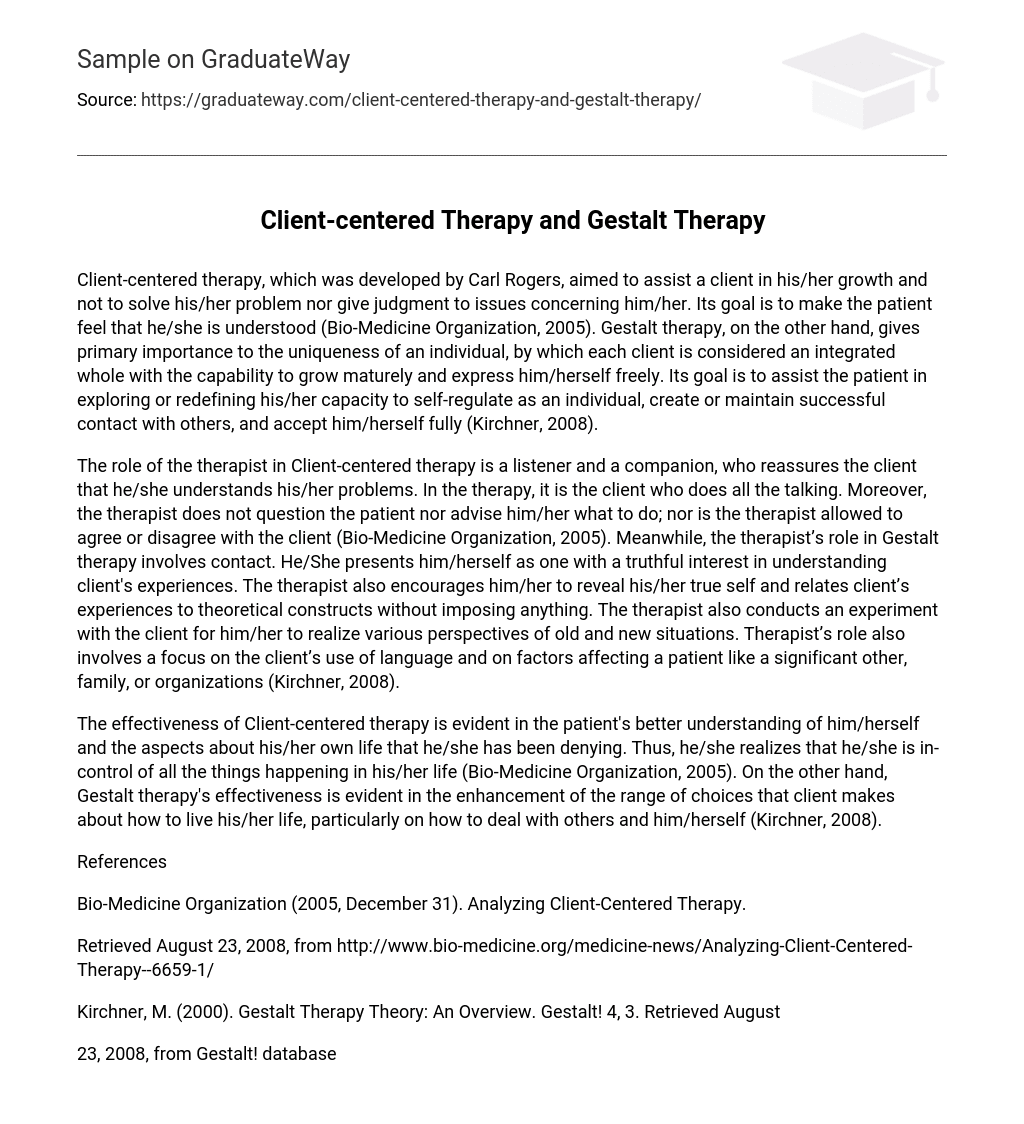Client-centered therapy, which was developed by Carl Rogers, aimed to assist a client in his/her growth and not to solve his/her problem nor give judgment to issues concerning him/her. Its goal is to make the patient feel that he/she is understood (Bio-Medicine Organization, 2005). Gestalt therapy, on the other hand, gives primary importance to the uniqueness of an individual, by which each client is considered an integrated whole with the capability to grow maturely and express him/herself freely. Its goal is to assist the patient in exploring or redefining his/her capacity to self-regulate as an individual, create or maintain successful contact with others, and accept him/herself fully (Kirchner, 2008).
The role of the therapist in Client-centered therapy is a listener and a companion, who reassures the client that he/she understands his/her problems. In the therapy, it is the client who does all the talking. Moreover, the therapist does not question the patient nor advise him/her what to do; nor is the therapist allowed to agree or disagree with the client (Bio-Medicine Organization, 2005). Meanwhile, the therapist’s role in Gestalt therapy involves contact. He/She presents him/herself as one with a truthful interest in understanding client’s experiences. The therapist also encourages him/her to reveal his/her true self and relates client’s experiences to theoretical constructs without imposing anything. The therapist also conducts an experiment with the client for him/her to realize various perspectives of old and new situations. Therapist’s role also involves a focus on the client’s use of language and on factors affecting a patient like a significant other, family, or organizations (Kirchner, 2008).
The effectiveness of Client-centered therapy is evident in the patient’s better understanding of him/herself and the aspects about his/her own life that he/she has been denying. Thus, he/she realizes that he/she is in-control of all the things happening in his/her life (Bio-Medicine Organization, 2005). On the other hand, Gestalt therapy’s effectiveness is evident in the enhancement of the range of choices that client makes about how to live his/her life, particularly on how to deal with others and him/herself (Kirchner, 2008).
References
Bio-Medicine Organization (2005, December 31). Analyzing Client-Centered Therapy.
Retrieved August 23, 2008, from http://www.bio-medicine.org/medicine-news/Analyzing-Client-Centered-Therapy–6659-1/
Kirchner, M. (2000). Gestalt Therapy Theory: An Overview. Gestalt! 4, 3. Retrieved August
23, 2008, from Gestalt! database





